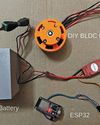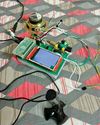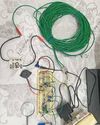
Some years ago, a hammer fell into a high-pressure steam pipe at Tata Power’s plant in Mundra, Gujarat, stalling the plant’s operations. It was a pretty complex situation, as the 90-degree bend of the pipe made it almost impossible to see where the hammer was stuck. Interestingly, the plant sought the help of Gridbots Technologies, an Ahmedabad based robotics startup. The Gridbots team made some modifications to the gripper of their Stinger pipeline robot and managed to get the hammer out in a five-hour operation, at a cost of ₹1,600,000. Compare that with all other alternatives, which would have taken several days and cost the company tens of billions of rupees in expenses and losses, and you will understand why a lot of robotics enthusiasts remember and recall this story even after so many years.
That indeed is what robots are meant to do. In the robotics world, this is known as the 4D principle—let robots do tasks that are dull, dirty, dangerous, or dear. That is, work that is repetitive, unhygienic, risky, or costly (where one cannot afford to err). For this purpose, robots have been used in heavy industries like automotive, and dangerous conditions like mines, for a long time now.
However, the robots of yore were generally expensive, huge, heavy, and often dangerous. They had to be confined to work-cells, away from human workers. Most robots were also difficult to program, and hence used for specific, unchanging tasks. This put them out of the reach of small and medium sized industries characterised by high-mix, low-volume jobs. On top of everything else, human workers often looked at these intimidating robots as the bad guys who had come to steal their lunch!
Enter cobots
هذه القصة مأخوذة من طبعة September 2022 من Electronics For You.
ابدأ النسخة التجريبية المجانية من Magzter GOLD لمدة 7 أيام للوصول إلى آلاف القصص المتميزة المنسقة وأكثر من 9,000 مجلة وصحيفة.
بالفعل مشترك ? تسجيل الدخول
هذه القصة مأخوذة من طبعة September 2022 من Electronics For You.
ابدأ النسخة التجريبية المجانية من Magzter GOLD لمدة 7 أيام للوصول إلى آلاف القصص المتميزة المنسقة وأكثر من 9,000 مجلة وصحيفة.
بالفعل مشترك? تسجيل الدخول

ESP32-Powered AUDIO-VISUAL SIREN
This sound alternator is designed to simulate the effects of a police siren, combining sound and light to create a dynamic audio-visual experience.

BLDC MOTOR With Web-Based Speed Control Using ESP32
Integrating wireless control into brushless direct current (BLDC) motor systems opens up exciting possibilities for applications such as remote-controlled cars, robots, and other innovative systems.

Pi Zero Portable BILINGUAL TRANSLATOR
This system is designed as a bilingual translator, leveraging the gTTS library to support multiple Indian languages, including English (en), Bengali (bn), Gujarati (gu), Hindi (hi), Kannada (kn), Malayalam (ml), Marathi (mr), Tamil (ta), Telugu (te), and Urdu (ur).

Op-Amp-Based VEHICLE THEFT DETECTOR
A simple, low-cost device can effectively alert homeowners or occupants if a parked vehicle is moved or tampered with.

loT SMART METER With Dashboard
Energy meters in homes track electricity usage, enabling accurate billing by governments and providers.

Choose The Right Cloud Platform For Implementing loT PROTOCOLS
Working with loT protocols like MQTT, AMQP, and CoAP on cloud platforms is essential for developing scalable and efficient lol applications. The choice of the programming platform will depend on factors like project requirements, existing skills, and target devices. Leveraging the appropriate libraries and cloud services can enable seamless integration of lol devices with cloud-based applications.

Why TMR SENSORS Lead Next-Generation Design
TMR sensors are gaining traction in industries needing precision and power efficiency. What makes them the go-to choice for modern designs?

DESIGNING PCBs For EMI Management
Electromagnetic interference can derail your PCB’s performance. EMI management is not just a technical necessity but a hallmark of exceptional PCB design.

CUTTING COSTS, NOT CORNERS: Building Large Scale Applications With Open Source Software
Here are some strategies and best practices for leveraging open source to create enterprise-grade web and mobile applications without sacrificing quality or functionality.

"We Are One Of India's Very Few State Bodies To Manage The Entire Lifecycle Of The Electronics EcosystemFrom Approvals To Subsidies."
What is Gujarat State Electronics Mission GSEM), and how is it attracting major investments in electronics manufacturing, particularly semiconductor manufacturing, to Gujarat? To delve deeper, Electronics For You’s Nijhum Rudra spoke with Manish Gurwani, the head of GSEM. Here is what he revealed...